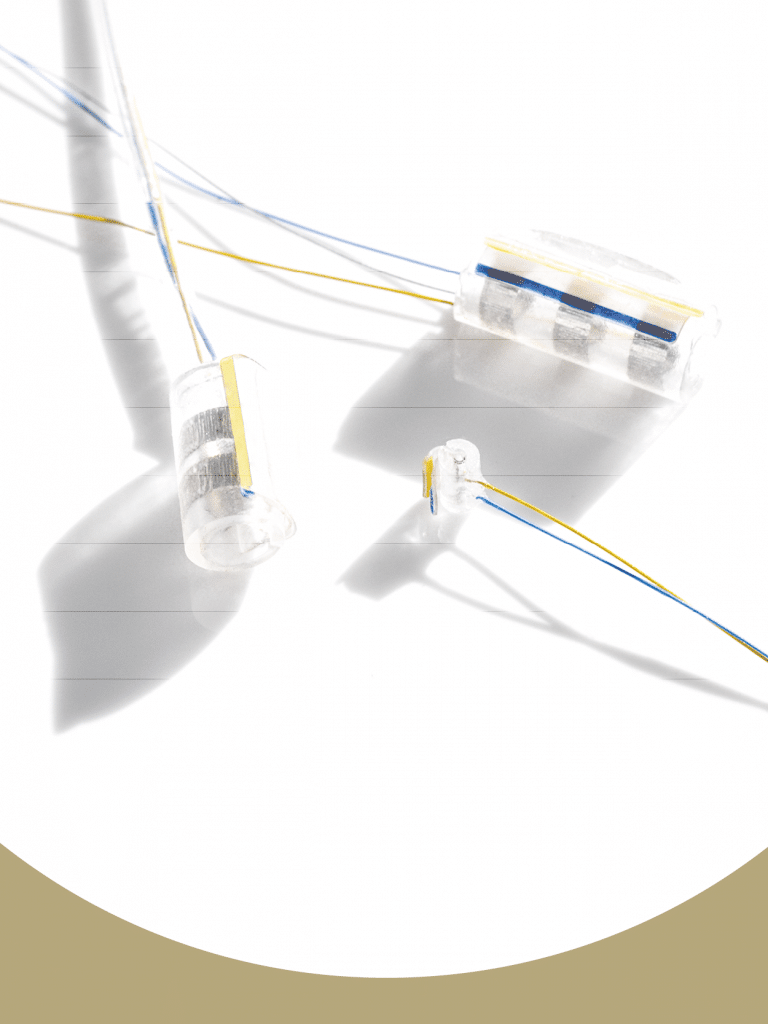CorTec’s cuff electrodes have proven extremely helpful as interfaces for electrically interacting with the peripheral nervous system. The range of possible applications is vast. Cuff sizes, shapes and contact arrangements can be tailored to the specific target nerves, and the electrodes can both, stimulate and record.
Nerve stimulation is often used for activating muscles, e.g. for restoring movements after paralysis. Peripheral motor nerves, however, usually contain a number of nerve fiber bundles that activate functionally different sets of muscles or muscle fiber groups. To elicit a specific movement, it is therefore not enough to stimulate the whole nerve with a conventional, single channel ring electrode. Rather, multiple smaller electrode contact sites are needed that are able to activate only a specific fraction of the nerve. To this end, CorTec has developed multi-channel cuff electrodes that have several contacts spaced around the circumference of the nerve.
But the challenges don’t end there. Unfortunately, the functional subsections of a given nerve are not visually discernable. So, whether or not an electrode contact is hitting the sweet spot for eliciting a given movement is basically a trial-and-error game. The researcher places the electrode at a given position, stimulates the contacts with various current intensities, and observes the resulting muscle activations or movements. If the stimulation does not produce the desired outcome, the electrode is moved on to another position, until, hopefully, the stimulation becomes successful. That is a tedious, time-consuming and error-prone task if performed manually, rendering experiments inefficient and increasing risks for complications due to prolonged surgery times.
An Italian-Swiss group around Silvestro Micera, a real expert in peripheral neuromodulation, has now developed a tool to make this process more efficient. They created a software that automatically evaluates electrode stimulation selectivity in real time. As a read-out for determining electrode sensitivity, electromyograms of the target muscles are used. The user can run a complete sensitivity index analysis through a graphical user interface, with the results being displayed immediately on a computer screen. On the basis of these results, electrode positions can be optimized swiftly and reliably.
The software is based on Matlab code and works with a commercially available neurostimulator (Tucker-Davis). The authors are happy to share the tool upon request.
Learn more about our °AirRay Cuff Electrodes and discover more User Stories.
Citation:
Strauss I, De Luca D., Panarese A.M., Bernini F., Gabisonia K., Petrini F.M., Recchia F.A., Raspopovic S., Micera S. (2021): A Software Tool for the Real-Time in Vivo Evaluation of Neural Electrodes’ Selectivity 10th International IEEE/EMBS Conference on Neural Engineering (NER) Virtual Conference, May 4-6, 2011, doi: 10.1109/NER49283.2021.9441334
